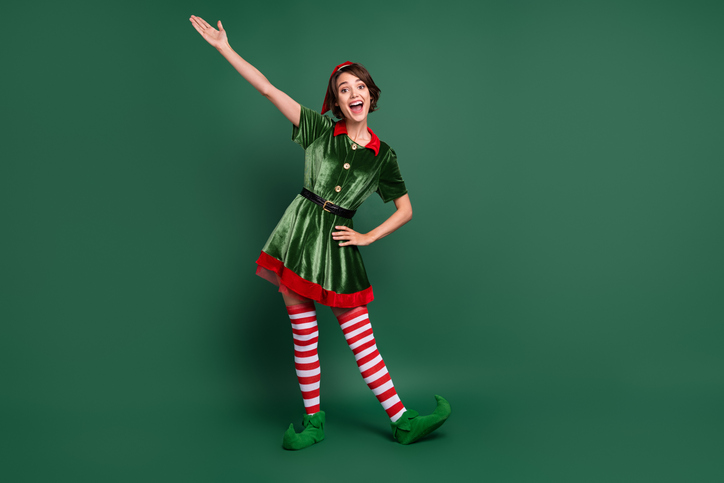Elf on the Shelf: How Does It Work?

Perhaps you have been adopting your scout elf for a few years. Perhaps you are not sure what the Elf of the Shelf is about. Discover if this family tradition is for you.
Where Does the Elf on the Shelf Come From?
Elf on the Shelf is a Christmas tradition started by Carol Aebersold and her daughters, Chanda Bell and Christa Pitts. It started as a family tradition but in 2005 Carol and her daughters published a book and elf kit, “Elf on the Shelf: A Christmas Tradition”. In 2007, actress Jennifer Garner, was seen carrying the book. Soon after, The Today Show featured the book. The Elf on the Shelf went viral. Millions of kits have been sold and the line has expanded to include clothing, accessories, animals, and more.
The story goes that Santa’s Scout Elves fly to the North Pole each night of December to tell Santa who is being nice and who is being naughty. The elves then fly back and hide in a new spot for the children to find them the next morning. Some elves like to stir up mischief each night before finding their new hiding spot.
Scout elves wear a solid red suit with a white collar. He also wears white mittens, and a red hat with a white brim.
What Are the Rules?

- Children cannot touch the elf, or he will lose his magic.
- The elf’s magic can be restored.
- The elf does not move or speak while the children are awake.
- The elf hears everything.
- The elf needs a name. Names tend to be something silly and cute, like Buddy, Snowflake, Bing, or Chippey.
- The elf matches the personality of their family.
At What Age Can You Start the Elf on the Shelf Tradition?
You can start it at any age but usually parents start when their children are around 2 or 3 years-old.
When Does the Elf on the Shelf Makes His First Appearance?
Usually, he appears between the 24th of November and the 1st of December, so he is around for a month until his return to the North pole on Christmas Eve.
Elf on the Shelf Ideas
- The Christmas tree.
- In the pantry.
- Living room spot.
- Inside the holiday wreath.
- On the mantel.
- In the stocking.
- In the fridge.
- By the door.
- On the staircase.
- In the blanket.
- In a plant.
- On a bookshelf.
- In a drawer.
Is It Good or Bad for Children to Believe in the Elf on the Shelf?
In the past few years some psychologists [1] have voiced their concerns against parents promoting their children to believe in traditions, such as Santa or the Elf on the Shelf. Why? Because they believe that when parents lie to their children, children may stop trusting them when they find out the truth.
What Does the Research Say about the Elf on the Shelf?
As far as I know there is no research looking specifically at the Elf on the Shelf but we can rely on the research on other imaginary characters, like Santa.
Evidence shows that it is not negative for children to believe in imaginary characters like Santa [2], the Tooth Fairy, or the Easter Bunny. Magical thinking is part of children’s development specially between the ages of 5 and 8. During these ages, many children have an imaginary friend and believe in monsters and flying carpets. Blurring the lines between reality and fantasy is part of childhood.
When Do Children Find the Truth About the Elf on the Shelf?
Research shows that around age 8, children start to figure out that Santa and the Tooth Fairy are not real. Most children come to this conclusion [3] on their own when they realize that the story is physically impossible.
Is It Better to Tell Children the Truth or To Let Them Be?
Children report feeling better when they managed to find the truth by themselves. So, even if you think your child is too old not to know the truth, let them be!
Sometimes your child may know but they choose not to tell you because they want to keep the magic going or because they think you will be sad once you know they know.
By the time your child comes to you to discuss it [4], they usually have given it plenty of thought and are ready to face reality. Follow your child’s lead. Use their questions to assess where to take the conversation and what they are ready to discuss and understand.
One important thing to tell them once they find out is not to spoil the fun for other kids: “Once you know, your job is to keep the magic going for other kids”.
Finally…
Whether you do the Elf on the Shelf or not, we wish you and your family a wonderful Christmas! If you have any questions or comments, please get in touch with me.
Love,
Ana
Do you have questions for Dr. Ana? Ask for free today!


